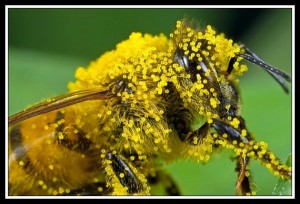Perhaps you, like me, want to learn more about bees, since you are doubtless hearing that they are in dire trouble. To do that, I read a book I came across called A Sting in the Tale, written by bumblebee expert Dave Goulson, professor of biology at Sussex University, and founder of Britain’s Bumblebee Conservation Trust.
The book opens with this lovely dedication: “For Seth, my youngest son. May there always be a flowery meadow and the sight and sound of buzzing bees for him to enjoy.”
The prologue that follows sets the tone for the entire book. Filled with entertaining — and sometimes gruesome — tales from Goulson’s childhood efforts to fill his bedroom with animals, it tells stories about the acquisition and loss of frogs, fish, snakes, birds, butterflies, moths, and more. Even though the results are often a bit sad, the stories themselves are often laugh-out-loud funny as the author pokes fun at himself for the mistakes he made on his learning journey, such as when he accidentally electrocuted a tankful of fish. Above all, though, the prologue clearly establishes Goulson’s credentials as a lover of wildlife.
As an adult, Dr. Goulson graduated from Oxford University and then did a PhD in butterfly ecology from Oxford Brookes University. As he explains in his post on the Sussex University website, “Shortly afterwards I got a lectureship at University of Southampton, where I stayed for 11 years. It was there that I began to specialize in bumblebee ecology and conservation. In 2006 I became Professor of Biology at Stirling University. In 2006 I also founded the Bumblebee Conservation Trust, a charity devoted to reversing bumblebee declines. In 2013 I moved to Sussex University.”
The book includes 17 chapters, with intriguing titles such as these: The Bumblebee Year, The Hot-Blooded Bumblebee, Comfrey and Smelly Feet, Tasmanian Devils, Bee Wars, Cuckoo Bumblebees, Ketchup and Turkish Immigrants, A Charity just for Bumblebees, and finally, Return of the Queen.
Each chapter is a trove of scientific information about bumblebees, gleaned from research and numerous field expeditions. They also include these somewhat startling facts:
- Evidence is skimpy, but scientists estimate that the first bees appeared about 130 million years ago.
- The bees began to die out at least in part due to changes that began during World War II, when, to counteract Hitler’s actions, England established policies that paid farmers to increase food production dramatically. This involved much greater use of pesticides such as DDT and led to the destruction of almost all of the flower-rich habitats in the UK, leaving no food for bees.
- A queen bee may use her own weight in sugar each day to incubate her eggs, which can require visiting up to 6,000 flowers!
- Flying bees have a body temperature generally close to the usual temperature of the human body. They generate the heat by the action of their wings — and keeping it constant is critical to their survival.
- Bumblebees have a very high metabolism. A running man uses up the calories in a Mars Bar in about an hour. A man-sized bumblebee would use those same calories in less than 30 seconds!
The author makes a very strong case for conservation. At present, he notes, species are going extinct at somewhere between 100 and 1,000 times the natural rate, largely driven by habitat destruction and the ravages brought by invasive species.
He writes: “… our survival and well being are inextricably linked to that of all the wonderful diversity of life on earth. We need worms to create soil; flies and beetles and fungi to break down dung; ladybirds and hoverflies to eat greenfly; bees and butterflies to pollinate plants; plants to provide food, oxygen, fuel and medicines and hold the soil together; and bacteria to help plants fix nitrogen and to help cows digest grass. We have barely begun to understand the complexity of interactions between living creatures on earth, yet we often choose to squander the irreplaceable, to discard those things that both keep us alive and make life worth living. Perhaps if we learn to save a bee today, we can save the world tomorrow?”
The key to helping our rarer species to thrive, he adds, is probably simply to add more flower patches to the landscape, making it a little easier for them to find food and keep their nests well provisioned.
I urge you to read A Sting in the Tale. The book will entertain you — and you will learn a lot. You’ll appreciate bees of all kinds, but especially bumblebees, even more than you do now.
As for me, I’m now reading A Buzz in the Meadow, in which Goulson tells the tale of developing a wildlife-friendly meadow in France. I hope with all my heart that because of his actions and our own, our grandchildren, like Seth, will always have “a flowery meadow and the sight and sound of buzzing bees” to enjoy.
Three Actions to Consider
- Stop using pesticides as much as possible in your own garden.
- Plant flowers that are bee-friendly.
- Support — or join — the Bumblebee Conservation Trust.
Like this post? Sign up to receive an email each time a new post is available. We will never loan, sell or rent your email address — that’s a promise! Please use the buttons below to share with others.
